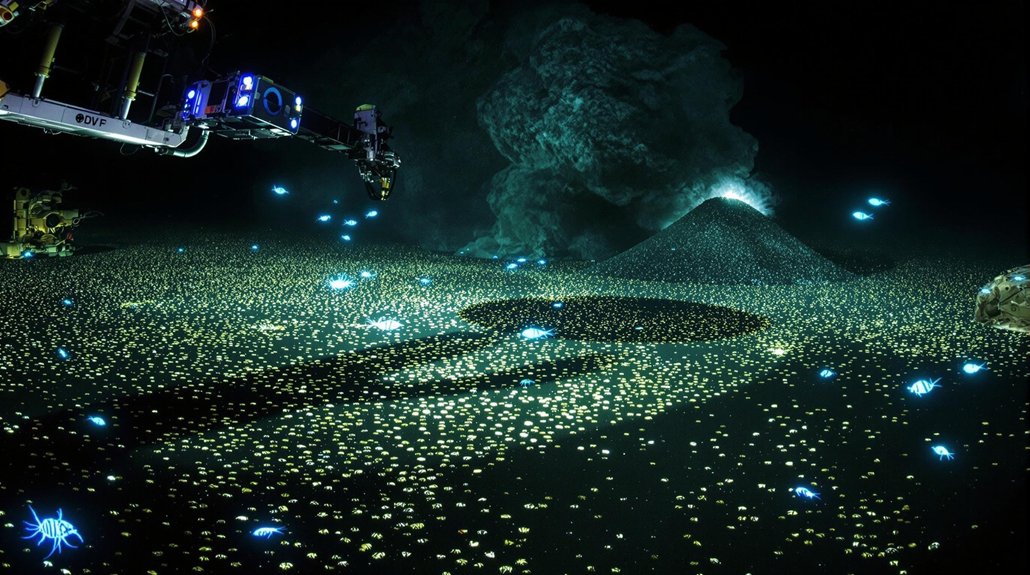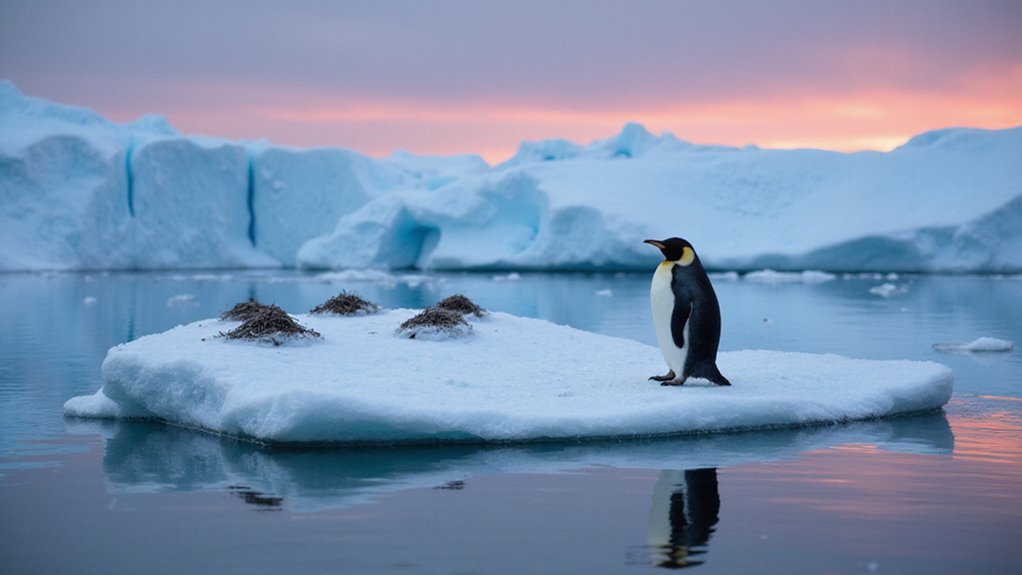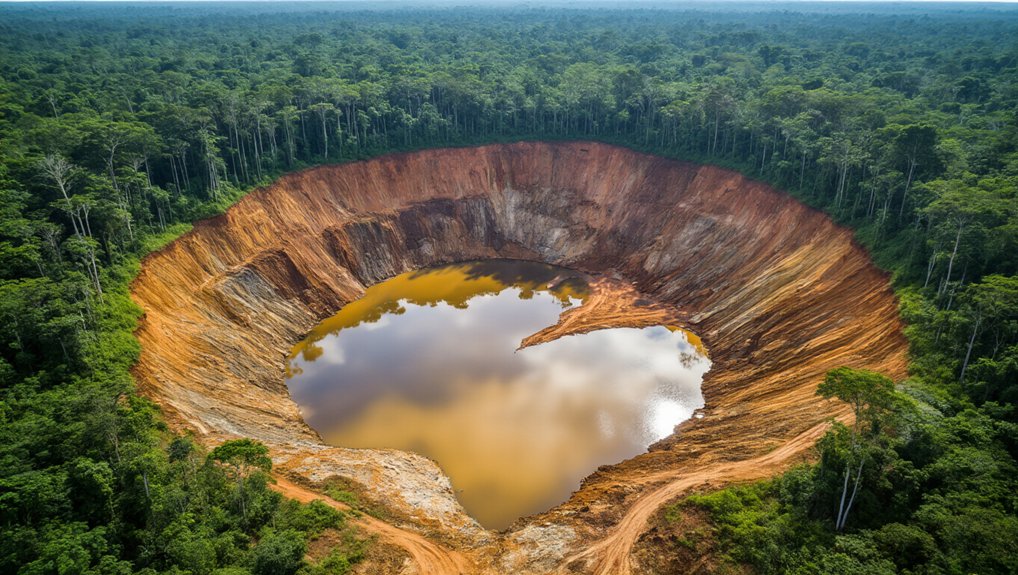The Clarion-Clipperton Zone in the Pacific harbors an estimated $150 trillion in underwater mineral wealth. Companies are developing sci-fi-like tech—vacuum robots and hydraulic pumps—to harvest polymetallic nodules rich in metals essential for green energy. But here’s the kicker: mining might devastate pristine ecosystems that haven’t recovered from experiments 26 years ago. Nations and corporations are racing to claim their piece while regulations lag behind. The battle for this untouched treasure trove is just beginning.
Where is the next gold rush taking place? Not in California or the Yukon, but thousands of feet below the ocean’s surface. The Clarion-Clipperton Zone, spanning 4.5 million square kilometers of Pacific seafloor, is loaded with potato-sized polymetallic nodules. These unassuming rocks contain manganese, nickel, copper, zinc, cobalt, and rare earth elements. Oh, and about $150 trillion worth of gold. No big deal.
Companies are racing to develop technology to harvest this underwater treasure. Remote-controlled vacuums. Grinding robots. Hydraulic pumps. Dredges processing thousands of cubic yards daily. It’s like something from a sci-fi movie, except it’s happening now.
The future is now: metal-hungry machines prowling the ocean floor, suctioning Earth’s final frontier for profit.
First commercial agreement? Already signed in Papua New Guinea waters.
But there’s a catch. Always is. These mining operations could devastate deep-sea ecosystems we barely understand. Sediment plumes choking marine life. Migratory fish patterns disrupted. Twenty-six years after experimental disturbance, some areas still haven’t recovered. Mother Nature doesn’t exactly bounce back from underwater bulldozers. Studies conducted by MIT have shown that sediment plumes can form low-lying currents that travel along the seafloor, potentially impacting vast areas beyond the mining sites.
The economic potential is staggering. These minerals are essential for green energy technologies – pretty ironic that we might destroy ocean ecosystems to build solar panels and wind turbines. Mineral-poor nations see a chance for supply chain independence. The International Seabed Authority has issued 31 exploration permits already.
Regulations exist, sort of. The UN Convention on the Law of the Sea provides a framework, but actual mining regulations? Still pending. Experts predict deep-sea mining will become mainstream by 2040, with increasing commercial viability driving expansion. Some nations want moratoriums while others are full steam ahead. Classic humans – find treasure, fight over it.
Scientists keep making discoveries about underwater gold formation. Seawater causes gold nanoparticles to clump together. Deep ocean trenches might be gold-forming hotspots.
Meanwhile, Pacific Island nations worry about environmental damage while global powers position for control.









